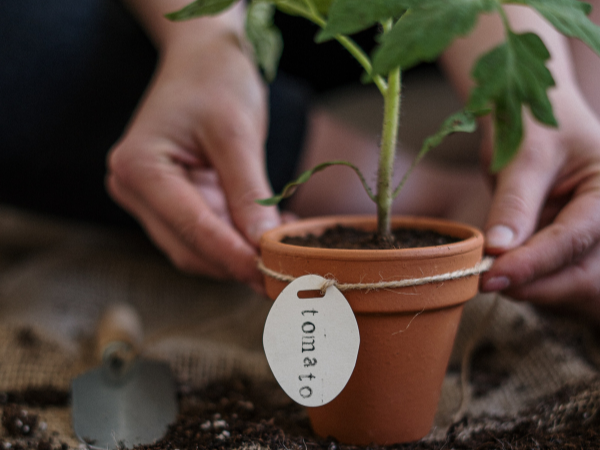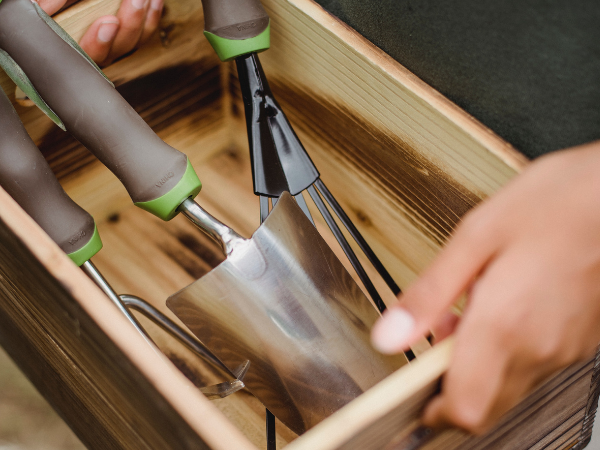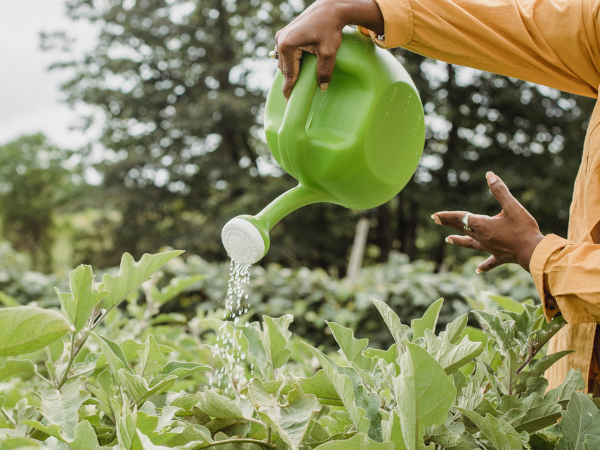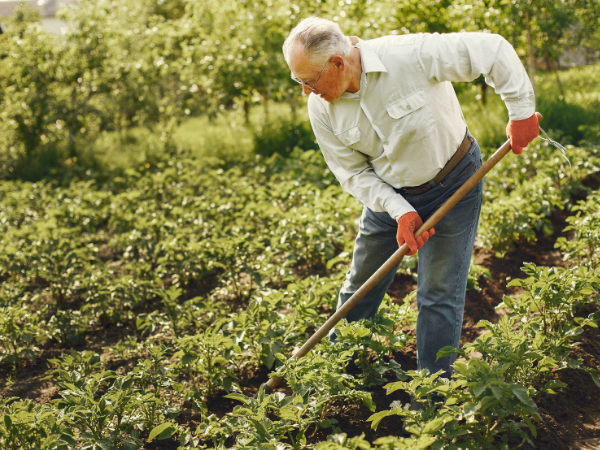Growing food at home – the ultimate step-by-step guide
You may have noticed your social media friends growing food at home. This has been a great way to pass the time while the lockdowns continue. If you look closer, though, you’ll see that this activity is more than just a relaxing hobby.
We’ll start by explaining why planting fruits and vegetables at home is a great idea. Then, we’ll go through the many details of growing food at home. This includes choosing your first plants, preparing your home garden, keeping pests away, and more.
You don’t have to go to the grocery store for everything you need. With enough time and the right skills, you may grow all your favorite dish or salad ingredients. Later, you’ll see all the other great benefits of growing food at home!
Is it a good idea to grow food at home?

Are you following a certain diet, such as vegan? Perhaps you’re concerned about the environment? Starting a food garden is great for the following reasons:
- Healthier meals – You could be missing out on more nutrients when you buy produce at stores. They store fruits and veggies for long periods, causing them to degrade over time. On the other hand, harvesting them from your vegetable garden ensures you get them fresh every time.
- Maintain good health – You get some exercise when preparing and maintaining a garden. What’s more, you get to bask in the sunlight and fresh air. These are great ways to promote mental health, especially during the pandemic. Growing food at home lets you do all of them in one activity.
- Save money – You can set aside more cash by growing vegetables at home, and you only need to spend a few bucks on seeds and supplies. When it’s harvesting time, you reap far more fruits and veggies than you could purchase from the supermarket.
- Eco-friendly – Transporting produce from the farm to the market consumes a lot of fossil fuels. Modern farming often relies on harmful chemicals and pesticides that may spread in the environment.
- Sustainability – Growing plants at your home provides a consistent supply of produce for your family. Similarly, countries are finding new ways of growing food within their borders. For example, the Philippines recently built urban gardens in response to the coronavirus pandemic.
How do I plan my home garden?
This isn’t as simple as burying seeds in the soil. You must consider various factors in starting your home garden. Let’s go through each one below:
- Check your space – If you want to grow plants, you need a wide spot with good soil and eight hours of sunlight. You may buy a soil test kit to check the one you have at home. According to the USDA, they usually cost around $7.00 to $10.00.
- Set gardening goals – Think how much time, money, and effort you’re willing to put into growing food at home. This will also determine the kinds of plants you’ll need. Since it’s your first time, you might want to start small.
- Select your seeds – This will vary depending on your country. Some plants can’t grow in certain climates. If you live in a tropical country, you may struggle to grow strawberries in your yard. First-timers may want to choose low-maintenance crops like onions, garlic, potatoes, or cherry tomatoes.
- Map your garden – A plant spacing chart can help you provide adequate space for your plants. Too little can stop your plants from growing, and too much may waste space for more crops. Moreover, you may want to have a calendar and to-do list for gardening tasks.
- Purchase tools – If you plant on a plot of land, you’ll need a rake, spading fork, or a wheelbarrow. For container gardening, though, you may want smaller alternatives, such as a trowel. No matter what, you’ll need a pair of gloves, and you may need additional ones for growing indoors, such as a grow light.
Read More: What Will, The New Normal, Look Like?
How do I start growing food at home?
After the previous steps, it’s time to prepare your first home garden. This will also involve a few steps, and let’s go through each one:
- Planting seeds – Bury seeds at the right depth. Read the instructions on the seed packet, or research them on the internet.
- Water your plants – As a rule of thumb, you should water your plants once or twice a week. However, you may follow the seed packet or online instructions.
- Wait – Don’t think you’ll just leave your plants alone! Remember that calendar and to-do list we mentioned? Set time in between watering plants to remove pests and weeds. Depending on your crops, you may have to perform additional maintenance.
- Start harvesting – Eventually, your plants will bear fruits and vegetables. Some crops should be cut with scissors, while you may pick others by hand.
Different ways of growing food at home
You may set different types of home gardens depending on your current space. Let’s go through each and see which one suits your home:
- Container gardening – This is a great choice if you have limited space. You could go with pots or other containers like old pasta strainers and wooden barrels. It’s also great if it’s your first time or you don’t want to exert a lot of effort.
- Vertical gardening – This involves growing crops upwards along a wall. You could use wall-mounted trays or hanging baskets, and this could also save space in your yard. What’s more, you could design your vertical garden with aesthetics in mind.
- Square foot gardening – This uses raised beds that usually measure a square foot. Square foot gardening is a good choice if you have a spacious yard, and it has numerous advantages over other types. For example, it minimizes waste and facilitates weed removal.
- Community gardening – This was a trending type of garden during the pandemic, and it allowed a local area to produce food affordably. What’s more, it allowed people to socialize and keep their spirits up during the pandemic. However, we strongly advise that you follow your country’s COVID guidelines before making one yourself.
Other tips when growing food at home
- Plant what you need – Your garden should provide crops you can truly eat. Otherwise, you’ll waste food, money, time, and effort.
- Follow planting seasons – Know your growing zone and your chosen plants. Otherwise, you’ll get fewer yields or none at all.
- Remove pests – Insects and other animals may take bites off your crops. Get them out of your garden as soon as possible. You may want to include insect-repelling plants in your garden instead of spraying them with chemicals.
- Add compost – This replenishes the nutrients in garden soil. Usually, you only have to do this once a year.
Final thoughts
Growing food at home may take a lot of effort. Yet, it’s worth it for numerous reasons. It could save you money and provide healthier food for your family.
We only provided general tips for home gardening. You may have to perform other steps, depending on numerous factors. Ask your local store for further assistance.
You may find online tips that are more suited for your location. Social media groups may offer pointers as well. There’s an abundance of help available on the internet!
Related Articles
Learn more about growing food at home
Can I grow all my food?
The foods you may grow will depend on numerous factors like your preferences and location. If you like strawberries, they may not be an option in your tropical country. Other than that, your home garden can have a wide range of crops. You just need the right tools, a bit of money, and a lot of time and effort.
How do I start to grow food?
Start by finding a spot at home with adequate sunlight, wide space, and good soil. Then, select the seeds for your garden depending on your preferences and climate. Water them at least once or twice a week, depending on the type of plants you have. Once they’re fully grown, harvest them by hand or cut them off their plants with scissors.
Is growing food at home good?
Having a home garden can provide numerous benefits. For example, it may save you money since you won’t have to spend on grocery trips or deliveries. Homegrown plants also pack more nutrients than those found in stores. What’s more, preparing and maintaining a garden gives you time to get sunlight and exercise.




